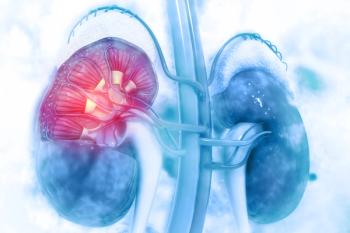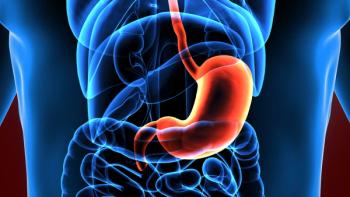
Tirzepatide Produces Clinically Meaningful Improvement in Symptoms of Obstructive Sleep Apnea
Phase III SURMOUNT-OSA trial data show positive impact of tirzepatide in patients with moderate-to-severe obstructive sleep apnea and obesity.
Treatment with tirzepatide (Zepbound and Mounjaro; Eli Lilly) was found to improve sleep-related patient-reported outcomes, as well as apnea–hypopnea index (AHI) scores, body weight, hypoxic burden, high-sensitivity C-reactive protein (hsCRP) concentration, and systolic blood pressure in patients with moderate-to-severe obstructive sleep apnea (OSA) and obesity.1 These data from the Phase III SURMOUNT-OSA (NCT05412004) clinical trial, published in The New England Journal of Medicine, follow findings from the trial released in April showing tirzepatide reduced the severity of OSA in patients with obesity.2
“Symptoms of [OSA] represent a substantial disease burden and increased risk of injury, including increased risk of motor vehicle accidents and work-related injuries,” the study authors wrote. “The symptom severity in [OSA] may also be a predictor of increased risk of cardiovascular complications. Therefore, it is clinically relevant that in the current trials, positive effects of tirzepatide on the participants’ sleep-related functioning and sleep disturbance were detected on the basis of PROMIS-SRI and PROMIS-SD scores.”1
Zepbound was approved in November 2023 for adults with obesity with a BMI of 30 kg/m2 or greater, or overweight individuals with a BMI of 27 kg/m2 or greater who also have weight-related medical problems, including hypertension, dyslipidemia, type 2 diabetes mellitus, OSA, or cardiovascular disease.3 Preclinical and clinical trials have shown that dual GIP/GLP-1 agonist therapy produces superior glucose control and weight loss compared to selective GLP-1 receptor agonists.4
The multi-center, randomized, double-blind, parallel, placebo-master protocol SURMOUNT-OSA trial evaluated the efficacy and safety of tirzepatide compared to placebo in adults with moderate-to-severe OSA and obesity who were unable or unwilling to use positive airway pressure (PAP) therapy as part of Study 1; and in patients who planned to stay on PAP throughout the duration of the trial as part of Study 2.
Investigators randomly assigned 489 participants at a 1:1 ratio to receive tirzepatide injection at maximum tolerated dose (MTD) of 10 mg, 15 mg, or placebo. The primary objective for both studies was to show the superiority of tirzepatide compared to placebo in change in AHI from baseline at 52 weeks. Those who tolerated the 15 mg dose continued on it as their MTD, whereas those who tolerated the 10 mg dose but did not tolerate 15 mg continued on 10 mg as MTD.
Results from Study 1 show a mean change in AHI −25.3 events per hour (95% confidence interval [CI], −29.3 to −21.2) in the tirzepatide cohort compared with −5.3 events per hour (95% CI, −9.4 to −1.1) in the placebo cohort at week 52. This translates to an estimated treatment difference of −20.0 events per hour (95% CI, −25.8 to −14.2) (P<0.001). Results from Study 2 show a mean change in AHI of −29.3 events per hour (95% CI, −33.2 to −25.4) in the tirzepatide cohort compared with −5.5 events per hour (95% CI, −9.9 to −1.2) in the placebo cohort, which translates to an estimated treatment difference of −23.8 events per hour (95% CI, −29.6 to −17.9) (P<0.001).1
“In the present trials involving adults with moderate-to-severe [OSA] and obesity, the AHI decreased significantly by up to 29.3 events per hour (a 58.7% change from baseline) among the participants who received tirzepatide, as compared with a decrease of up to 5.3 events per hour (a 3.0% change from baseline) among those who received placebo,” the study authors wrote. “This change is considered clinically relevant; the American Academy of Sleep Medicine defines the clinical significance threshold for the AHI as 15 or more events per hour, and other sources have proposed a 50% improvement in AHI as clinically relevant.”1
In terms of safety, the most frequently reported adverse events in the tirzepatide cohort were gastrointestinal and mostly mild to moderate in severity.
“In two trials, the participants who received tirzepatide had a clinically meaningful change in sleep-disordered breathing and alleviation of perceived sleep disturbance and sleep-related impairment, as well as reductions in common [OSA]-related cardiovascular risk factors,” the study authors concluded.1
References
1. Malhotra A, et al. Tirzepatide for the Treatment of Obstructive Sleep Apnea and Obesity. NEJM. Published June 21, 2024. DOI: 10.1056/NEJMoa2404881. Accessed June 26, 2024.
2. Tirzepatide reduced sleep apnea severity by up to nearly two-thirds in adults with obstructive sleep apnea (OSA) and obesity. News release. Eli Lilly & Company. April 17, 2024. Accessed June 26, 2024.
3. FDA Approves Lilly's Zepbound™ (tirzepatide) for Chronic Weight Management, a Powerful New Option for the Treatment of Obesity or Overweight with Weight-Related Medical Problems. Eli Lilly and Company. News release. November 8, 2023. Accessed June 26, 2024.
4. Rosenstock, J, et. al. Efficacy and safety of a novel dual GIP and GLP-1 receptor agonist tirzepatide in patients with type 2 diabetes (SURPASS-1): a double-blind, randomised, phase 3 trial. Lancet. 2021;398(10295):143-155. doi: 10.1016/S0140-6736(21)01324-6. Accessed June 26, 2024.
Newsletter
Stay current in clinical research with Applied Clinical Trials, providing expert insights, regulatory updates, and practical strategies for successful clinical trial design and execution.






.png)



.png)



.png)
.png)
